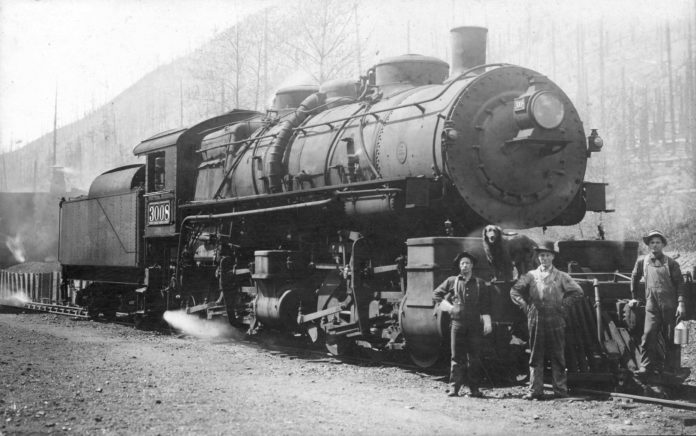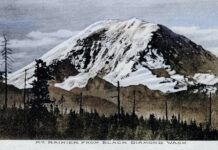As noted in prior columns, Lester was a railroad town in the upper Green River Valley, on the Stampede Pass line of the Northern Pacific Railway.
The town was named for Lester Hansacker, the local NP telegraph operator. This 1910 image shows three men standing in front of locomotive #3008 in Lester. Gus C. Linrothe was the engineer, and that might be his dog standing on top of the “cow catcher.”
That device consisted of a metal frame at the front of a locomotive for pushing aside cattle or other obstacles on the rail line. On the Stampede Pass line it was likely used for deer, elk, or accumulations of snow. For the first 45 years of the town’s existence, the railroad was the only way in or out of the upper valley.
Then in 1933, the Civilian Conservation Corp established a camp in Lester and built the greater portion of a road system, which still serves the area. However, a battle was brewing due to issues of public access and the City of Tacoma’s efforts to protect their watershed, the source of drinking water from the Green River. Tacoma immediately gated the roads but King County highway crews removed them in what was soon dubbed the “Lester Gate-War.”
The legal battles reached all the way to the Washington Supreme Court with Tacoma eventually prevailing. In time, Tacoma would choke off most access to the watershed. The last resident, Gertrude Murphy was granted special dispensation and lived out the 99 years of her life at her Lester home before dying in 2003. This image #1998.33.7 comes courtesy of Washington State Historical Society of Tacoma.







